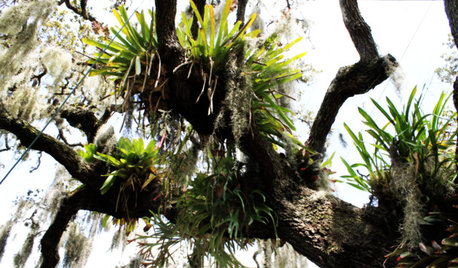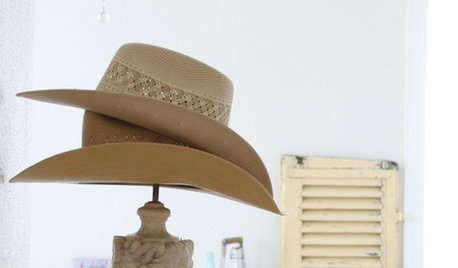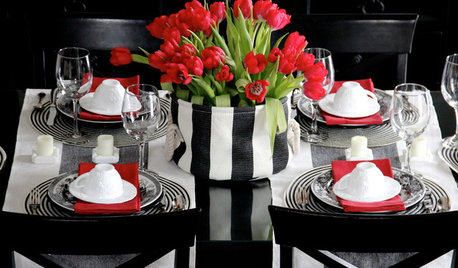Just got a great book : The Bromeliad Lexicon
stephania
17 years ago
Related Stories

PRODUCT PICKSGuest Picks: Kids' Book Storage You've Got to Check Out
Keep little readers interested and books organized with 18 appealing ways to house all their favorite reads
Full Story
WEDDINGSHow One Couple Got a Perfectly Intimate Backyard Wedding
Vintage pieces, natural materials and close family and friends are an ideal combination for a Pittsburgh couple
Full Story
GARDENING GUIDESGot a Hot, Humid Landscape? Add Tropical Flair With Air Plants
Turn tree trunks and walls into lush canvases with plants adapted to the canopies of the rainforest
Full Story
SALVAGEBike-Chain Chandeliers You've Got to See
Take a video ride with us to see how an artist creates amazing lighting fixtures solely from bike parts
Full Story
DECORATING GUIDESGot Stuff? Turn it Into Decor
Branches, Bottles, Baskets and Hats Become Mini Designs Around the Home
Full Story
HOUSEKEEPINGGot a Disastrously Messy Area? Try Triage
Get your priorities straight when it comes to housekeeping by applying an emergency response system
Full Story
ENTERTAININGGot Hand-Me-Down Dinnerware? Make a Memorable Meal
They might be mismatched and not your style, but those inherited plates and forks can help bring meaning to your table
Full Story
BEDROOMSNew This Week: 3 Bed, Nightstand and Wall Combos You’ve Got to Try
Whether you prefer moody, minimalist or sunny, these 3 bedrooms uploaded to Houzz recently are exercises in stylish harmony
Full Story
ECLECTIC STYLESee How a Bright Victorian Apartment Got Its Collected Look
Arriving in San Francisco with little but a chair and bed, a couple hits on an interior style that feels collected over time
Full Story
HOME OFFICESThe Great Paper Push: Just Say No
Going paperless is a heck of a lot easier when you put the kibosh on letting flyers, junk mail and more get past the front door
Full Story


foxwichya
LisaCLV
Related Discussions
A lexicon of repeat flowering roses
Q
New Bromeliad book
Q
Blooming Bromeliads...the book for sale
Q
Those books I got at the estate sale
Q
stephaniaOriginal Author
hotdiggetydam
LisaCLV
stephaniaOriginal Author
stephaniaOriginal Author
LisaCLV
LisaCLV
stephaniaOriginal Author
stephaniaOriginal Author
LisaCLV
stephaniaOriginal Author
bob740
stephaniaOriginal Author
bob740
hotdiggetydam
stephaniaOriginal Author
hotdiggetydam
Patris
pengoff
LisaCLV
LisaCLV
bob740
bob740
bob740
LisaCLV
stephaniaOriginal Author
stephaniaOriginal Author
bob740
User
hotdiggetydam
bob740
User